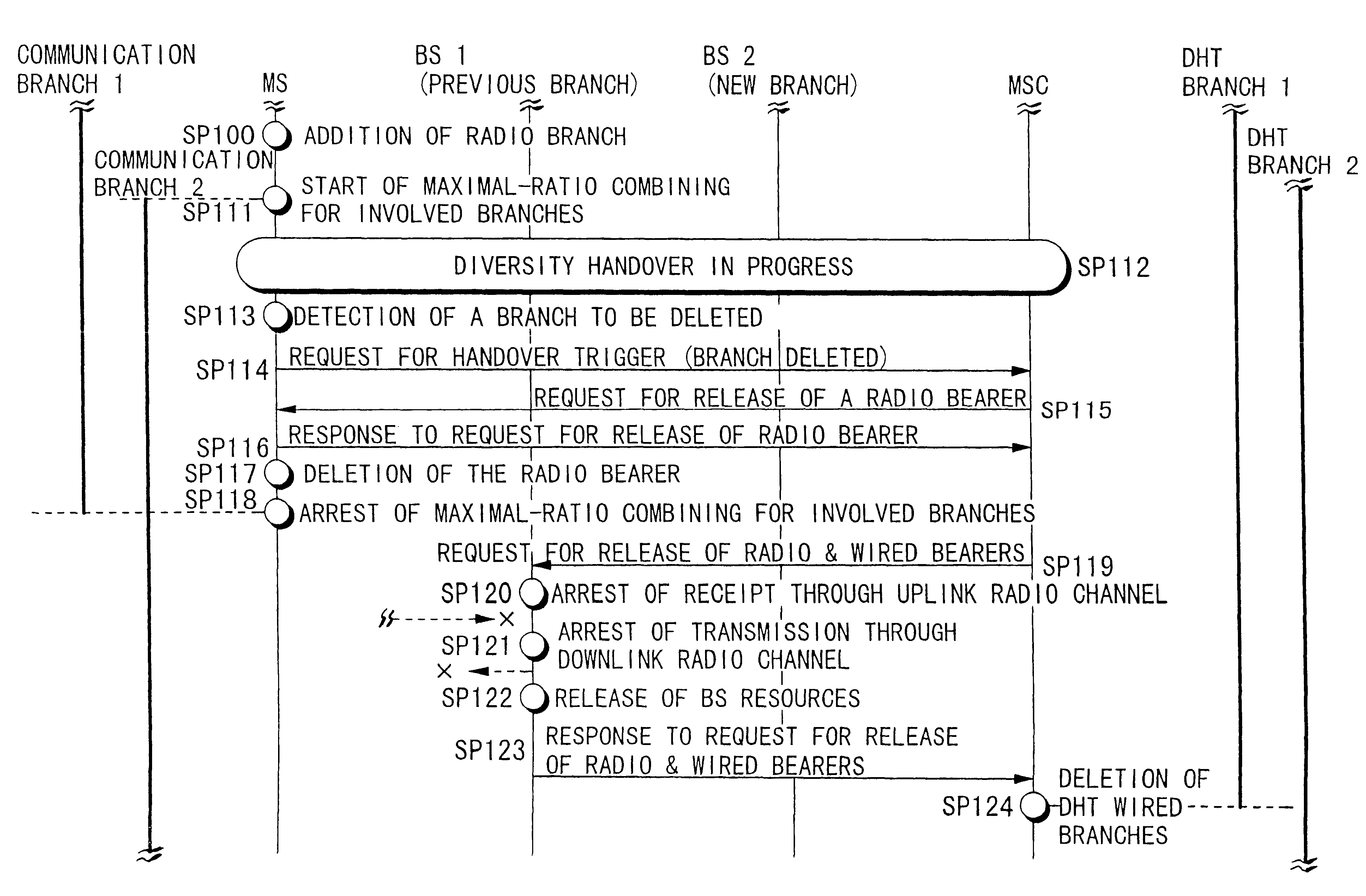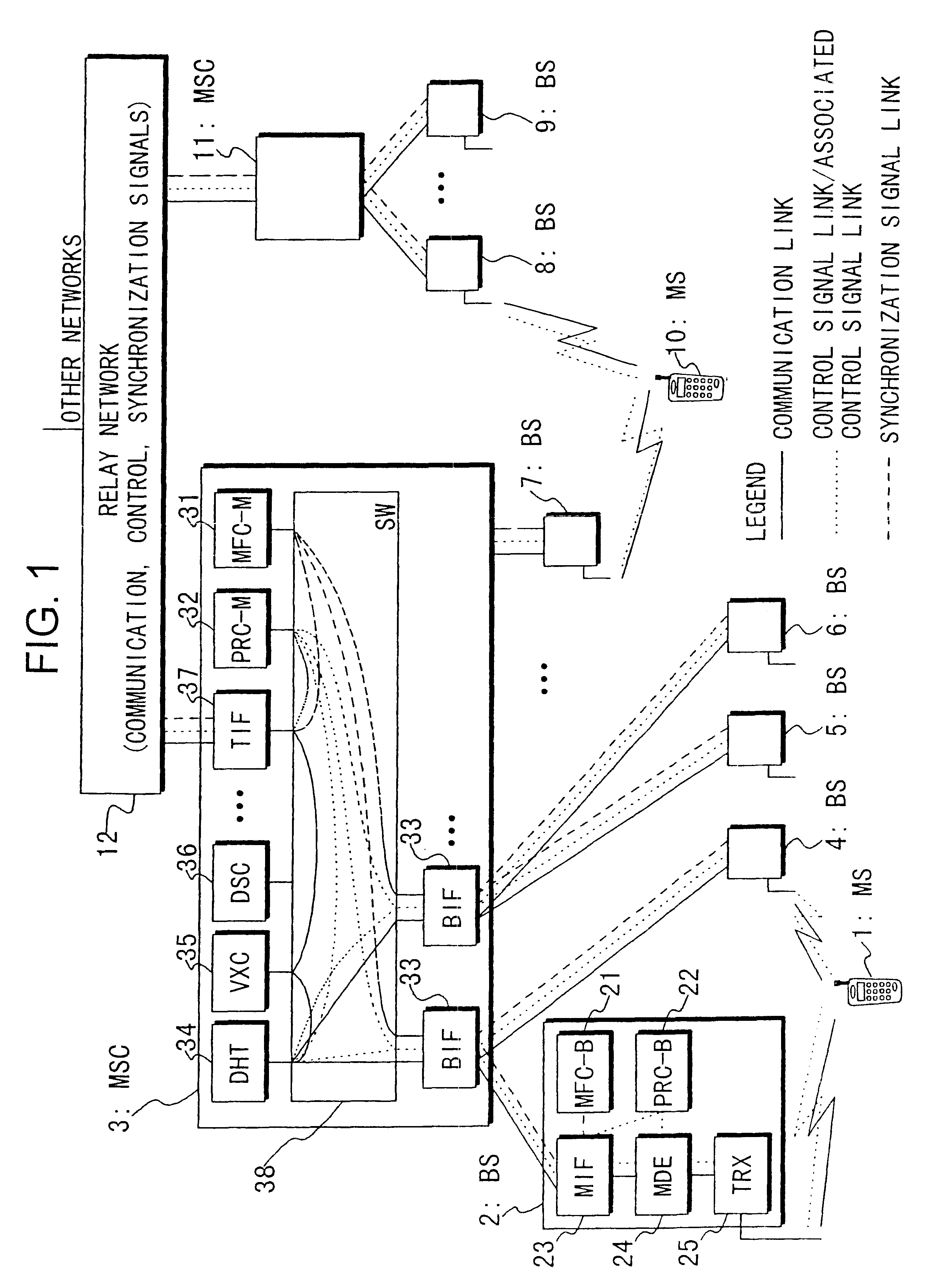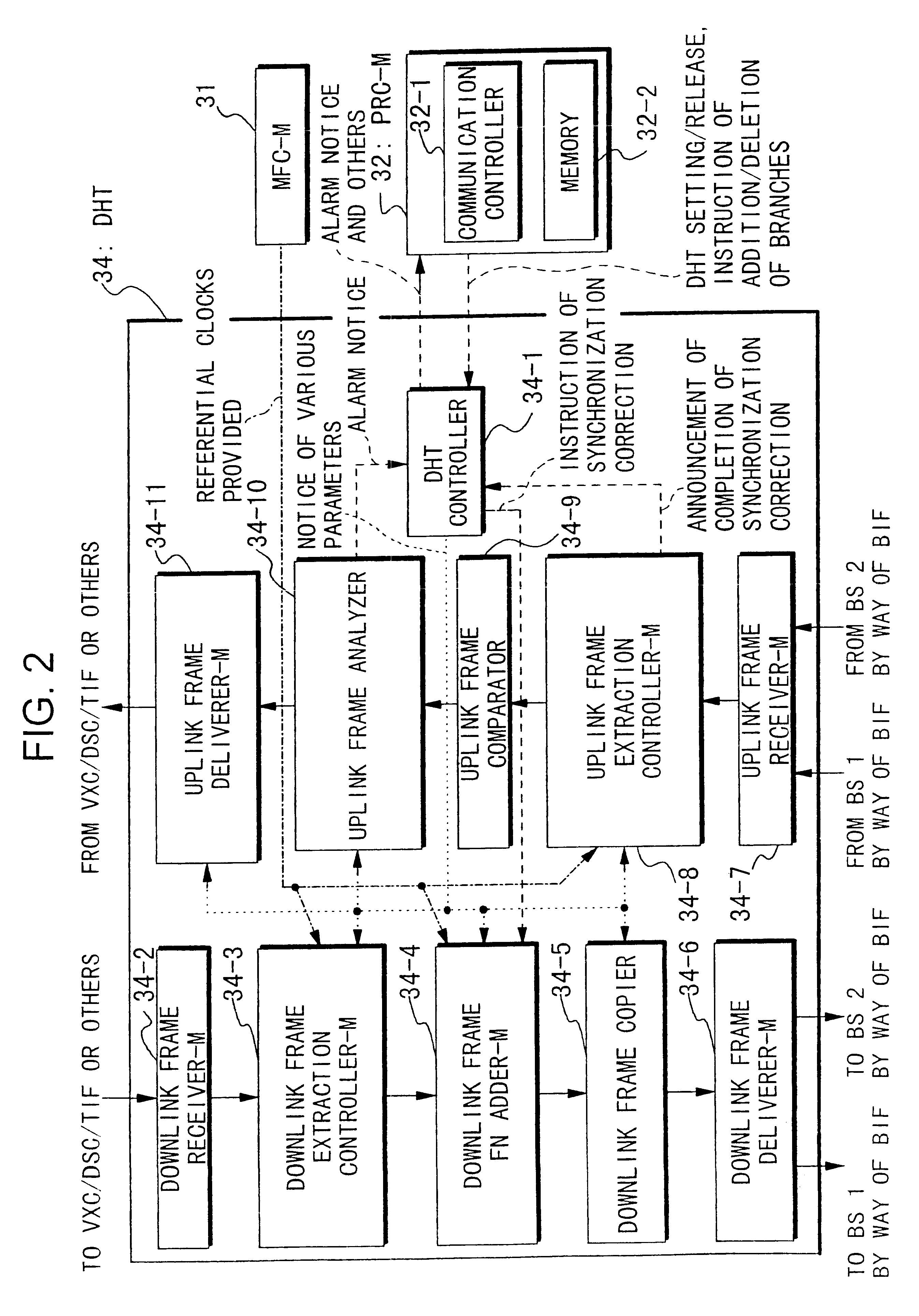Method for handover
a technology of handover and communication method, applied in the field of diversity handover communication technique, can solve the problems of inefficiency of the communication system it promises to realize, difficulty in reducing the size of a responsible terminal, and disconnection of communication
- Summary
- Abstract
- Description
- Claims
- Application Information
AI Technical Summary
Benefits of technology
Problems solved by technology
Method used
Image
Examples
Embodiment Construction
1. STRUCTURE OF AN EMBODIMENT
Below the structure of an embodiment of this invention will be described with reference to FIG. 1.
In FIG. 1, symbols 1 and 10 represent mobile stations (MS); symbols 2 and 4-9 base stations; and symbols 3 and 11 mobile switching station (MSC), and they form nodes in a mobile communication system.
Within the base station 2, symbol 23 represents an MSC interface (MIF) installed in the BS, and form a communication link and a signal link with a BS interface (BIF) 33 installed in MSC 3. A radio frame synchronizer (MFC-B) 21 installed in the BS determines frame synchronization in BS 2, and provides an operation reference clock to every section in BS 2.
A transceiver (TRX) 25 transmits and receives radio frames to and from the mobile station 1. A modulator / demodulator (MDE) 24 modulates and demodulates the radio frames and corrects errors thereof. A base station processor (PRC) 22 controls elements of the base station 2 on the basis of a predetermined control pro...
PUM
 Login to view more
Login to view more Abstract
Description
Claims
Application Information
 Login to view more
Login to view more - R&D Engineer
- R&D Manager
- IP Professional
- Industry Leading Data Capabilities
- Powerful AI technology
- Patent DNA Extraction
Browse by: Latest US Patents, China's latest patents, Technical Efficacy Thesaurus, Application Domain, Technology Topic.
© 2024 PatSnap. All rights reserved.Legal|Privacy policy|Modern Slavery Act Transparency Statement|Sitemap



